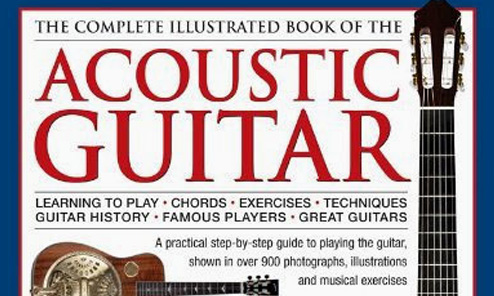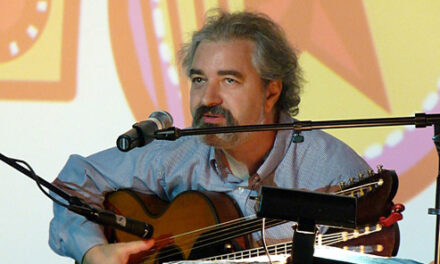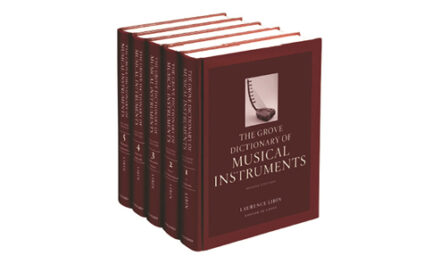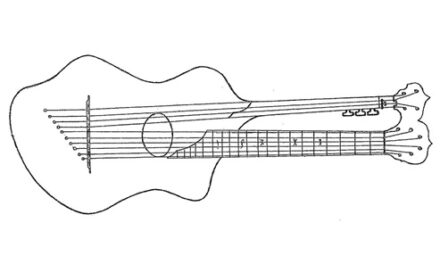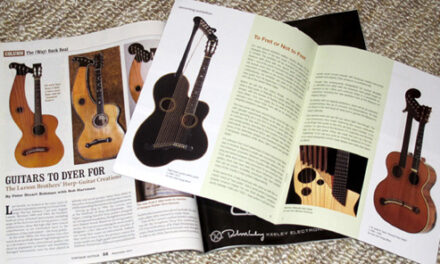I realized after my little rant last month (thanks to all who supported me, btw) that I hadn’t followed my own advice last year when I invited a photographer into our home for two days of shooting instruments for an unknown guitar book project. But if nothing else, we enjoyed becoming friends with the photographer, Laurie Evans. I was also doing this as a favor for another friend, James Westbrook (in the U.K.) who was co-authoring said book. I thus assumed I’d be in good hands since he had convinced the book publishers to shoot interesting instrument collections of many of his friends – like myself, Jim Forderer, Rainer Krause, and even the National Music Museum.
As the list of requested images grew more and more arbitrary it soon became clear that this was going to be another “Introduction to Everything Under the Sun About the Guitar” book. While I had no idea how Jimmy (or perhaps “co-author” Ted Fuller, or the publishers?) might be using the images within the narrative, they at least seemed to know what they wanted and had Laurie take careful notes while shooting photos. Per my suggestion, they then dutifully followed up later with a clear and simple PDF of all the photos with captions for me to proof. Only a couple of small errors, which I corrected, and, voila! See how simple? Except that they still screwed up, mixing up the dates on my two Gibson harp guitars (more on that later). Hey, these things happen.
Yes, the book’s now out (in the U.K. and the States, and who-knows-where), and it’s, well, pretty much as I imagined.
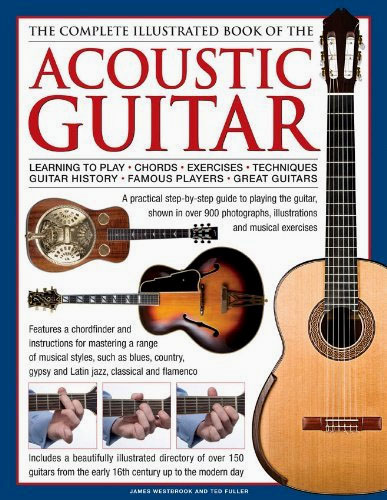
Just consider the title: The Complete Illustrated Book of the Acoustic Guitar: Learning to play, Chords, Exercises, Techniques, Guitar history, Famous players, Great guitars. I predicted that it would be a hodgepodge, but it’s actually more like two completely separate books in one. While not my thing, it might be just what will appeal “to the youngsters.” I’ll tell you this: Newbies pouring over their first chord diagrams are going to get a major eyeful of esoteric and amazing eye candy way beyond what they could possibly have been searching for after buying this book based on its cover. Like most “guitar porn” books, this one doesn’t feature “representative instruments” so much as “random examples of guitars owned by people the author/editor knows” (in this case, Jimmy and/or the publishers seem to enjoy accentuating the unusual and “one-offs”). I’m not saying that’s good or bad, it just seems odd in juxtaposition with the previous chapters.
Those chapters comprise the first 3/5ths of the book and were organized/written by Fuller (the two authors are never differentiated that I could see) and are yet another introduction/guide to playing the guitar, touching on an impressive array of topics with vast snippets of detail. It’s very current and ambitious – a lot on open tunings for example – but no surprises for most of us. (And did they really need to waste space in the ambitious full-color hardback book with yet another 30-page section of chord diagrams?)
I was curious about the title “Acoustic Guitar,” as most of us accept that “acoustic guitar” now refers specifically to steel-string flattop instruments. But the author addresses this on the very first page, allowing that “acoustic” still refers to anything played unamplified (ignoring the couple archtops with pickups) – ergo the book also covers classicals, flamencos, resonators and archtops, along with myriad historical instruments and “related instruments.” Doesn’t seem too unreasonable to me.
After these ~150 intense pages of Guitar 101, we get Jimmy’s History section, and then “Directory of Guitars.” Now it gets fun. There are a few photos submitted by others, but most are new, first-time-in-print photographs by Laurie Evans, who traveled to over a dozen different collections (including the Miner Museum, as I said). These are all perfect “textbook” shots (my stuff looks great!). Although he shot about 2 dozen instruments here, including several harp guitars (and one of Kathy Wingert’s, which she generously drove up for us), in the end, they included just 9, with only 1 HG, the big c.1908 Gibson.
Instead, rather ironically, I got the whole double-page resonator guitar (and mandolin) spread. Luckily, they don’t list owners of all the Evans-photographed specimens – otherwise, I might’ve had to retire from HG.net, as I’d be known as “that resonator guy”… In fact (though perhaps strange choices for an “acoustic guitar” book), they have my Dobro mandolin on the spine and my Kerry Char resonator on the cover! Inside, they give Kerry a wonderful plug for this instrument – in fact he gets all the credit! (somehow they missed that it was actually my own custom design and commission). Oh well, another simple mistake.
I got another surprise plug (those mentioned above would really be known only to me, and now you) – I presume this was from Jimmy, who also managed to sneak in one of Steve Sedgwick’s new Sullivan-Elliot copies (as a highlight of “The Guitar Today” spread), and also mention of John Doan. That occurs in the caption for John’s original Sullivan-Elliot, one of four examples in the double-page spread of “19th- and 20th-century multi-string harp-guitars.” The others are Jim Forderer’s beautiful Mozzani, someone’s unstrung Lacote Decacorde (another small complaint: too many unstrung guitars photographed!), and my Gibson (which they mixed up date-wise with my 1916 Style U. They also confoundedly describe its “12” sub-basses, even though we can plainly count 10.). Anyway, after a problematic opening sentence about the harp-guitar’s popularity (more to come on that), Jimmy finishes with “…many musician’s associated with this resurgence in interest, but none more so than Gregg Miner, who has been a key figure in promoting the harp guitar’s recent popularity.” Dang – can’t complain about that!
Which makes this next part all the more awkward. I’m certainly indebted to Jimmy for sharing a bit about me, my collection, and harp guitars with the world. That’s the happy side of my book report. The unfortunate side is a repeated string of references concerning some surprising errors in terminology and classification (if not errors, then “alternate conclusions”?) that I believe will do nothing but confuse the public further about guitars, harp-guitars, and harp-lutes. (“harp-lutes”? Yes, it’s complicated…) Had the publisher (as intended) or James sent me this text for review, I certainly would’ve tried to put the kibosh on it, or at least clarified some things between us (how ironic the “new rules” outlined in my June rant now seem). Actually, at this point, I don’t know if the fault lies with James or with the editors/publishers, or a bit of both (James has been overly busy, and will respond asap). I also can’t tell if I’m overreacting – it may be just a trivial issue that only future scholars need be careful with (and really, will any of them be sourcing this book?), and yet, if observant readers catch it, it does undermine key points in my hard-won harp guitar organology. And so I must next prepare a tedious, detailed point/counterpoint regarding these elements. (I’ll add them later in the form of comments appended to this blog)
You can’t win!
To be continued…

